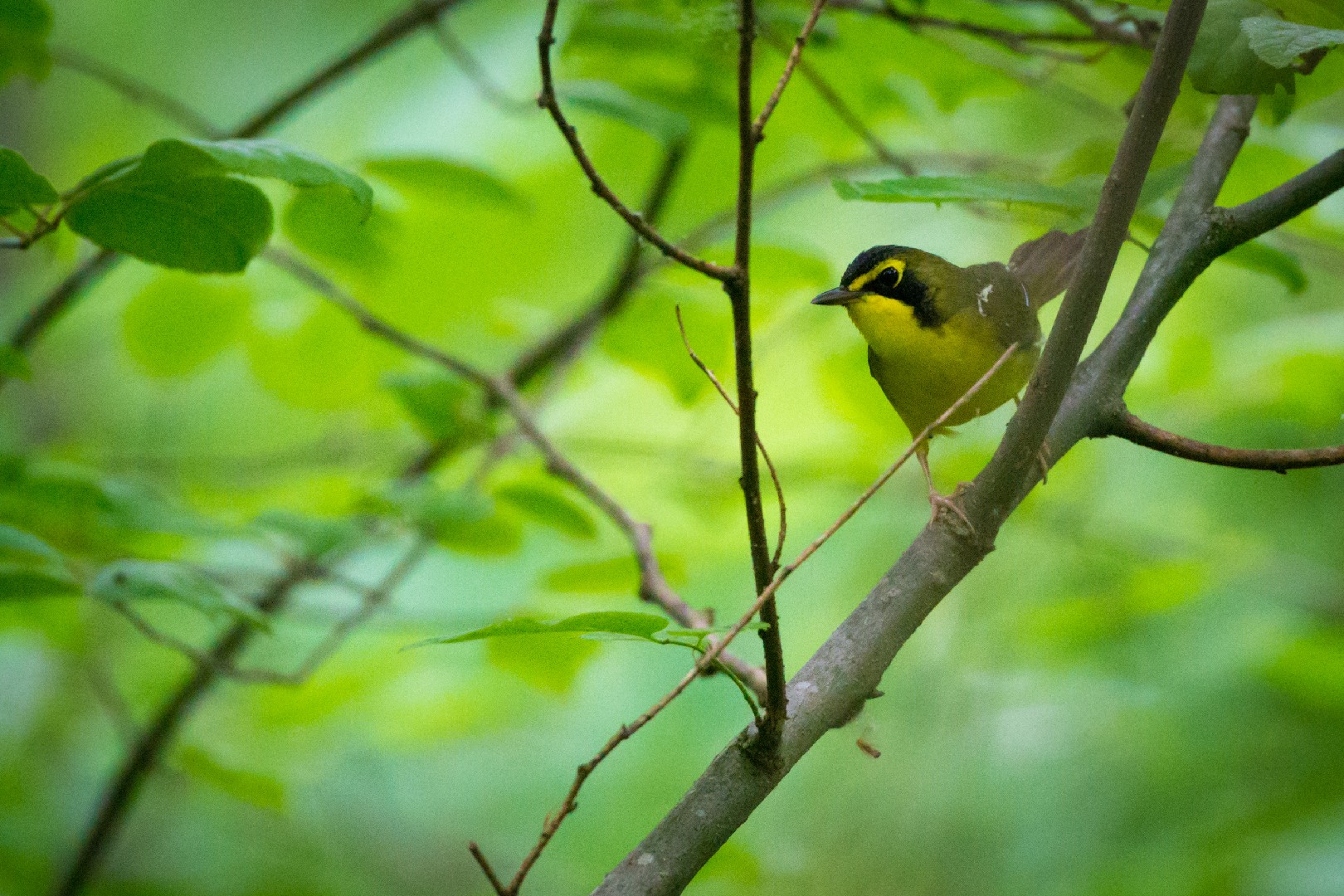Kentucky Warbler
A species of Yellowthroats Scientific name : Geothlypis formosa Genus : Yellowthroats
Kentucky Warbler, A species of Yellowthroats
Botanical name: Geothlypis formosa
Genus: Yellowthroats
Content
Description People often ask General Info
Description
Adult Kentucky warblers are mostly an olive-green in color on their back and nape, and a brilliant yellow below from their throat to their belly. They have a small tinge of black on their crown, and a large black mask with a yellow pattern that runs from the beak and encircles the eyes, resembling a pair of spectacles. Female Kentucky warblers have slightly less black on the sides of their head, and immature birds may have almost no black at all. Measurements: Length: 5.1 in (13 cm) Weight: 0.5-0.5 oz (13-14 g) Wingspan: 7.9-8.7 in (20-22 cm) 
Size
13 cm (5.25 in)
Colors
Black
Green
Yellow
Gray
Life Expectancy
7 years
Nest Placement
Ground
Clutch Size
3 - 6 eggs
Incubation Period
1 - 2 broods
Number of Broods
11 - 13 days
Nestling Period
8 - 9 days
Feeding Habits
Kentucky Warbler's diet mainly consists of insects including larvae, spiders, bugs, ants, beetles, grasshoppers, locusts, plant-lice, caterpillars, and occasionally fruit. They forage by hopping on the forest floor, turning over leaves, and probing with their bill, or gleaning from understory vegetation. On wintering grounds, kentucky Warbler preys on insects displaced by army-ant swarms.
Habitat
Kentucky Warbler typically resides in lowland hardwood forests with a rich understory, often in proximity to water sources like streams. These birds favor habitats with a mosaic of shaded and sunlit patches, which are often created by treefall gaps, trails, or small roads. Ideal vegetation includes mayapple, white avens, and spicebush, amidst other understory plants. Their preferred environment extends to large forest tracts over 1,200 acres during breeding season. In winter, kentucky Warbler occupies tropical lowland rainforests and agroforestry systems like shade-coffee or cacao plantations.
Nest Behavior
Kentucky Warbler's nesting process begins with the female selecting the site and constructing the nest.
Nest Characteristics
Kentucky Warbler's nest is well-concealed at the base of plants, like ferns or shrubs, occasionally slightly elevated. It's a cup-shaped structure built atop large oak leaves using coarse grasses, lined with fine grasses and rootlets, sometimes with a partial dome. Dimensions average 3.2 inches wide by 2.5 inches tall, with a cup 2 inches wide and 1.5 inches deep.
Dite type
Insectivorous
People often ask
General Info
Feeding Habits
Bird food type
Bird Feeder Type

Platform
Sounds
Call
Recording location: Mexico
Song
Recording location: United States
Behavior
Kentucky Warbler display unique courtship and territorial behaviors; males arrive early in breeding areas to sing and claim territory through visual threat displays and chases. Both genders defend their territories, where they also predominantly forage. Pair-bonding involves chasing episodes that may draw other kentucky Warbler to the area. While pairs are socially monogamous, instances of extra-pair fertilization are common. Males engage in mate-guarding during incubation. Parental roles diverge post-fledging, as they separate and individually take on fledgling care. Similarly, in tropical winter habitats, kentucky Warbler continue to maintain and actively defend their territories.
Species Status
Not globally threatened.
Scientific Classification
Phylum
Chordates Class
Birds Order
Perching birds Family
New world warblers Genus
Yellowthroats Species
Kentucky Warbler 